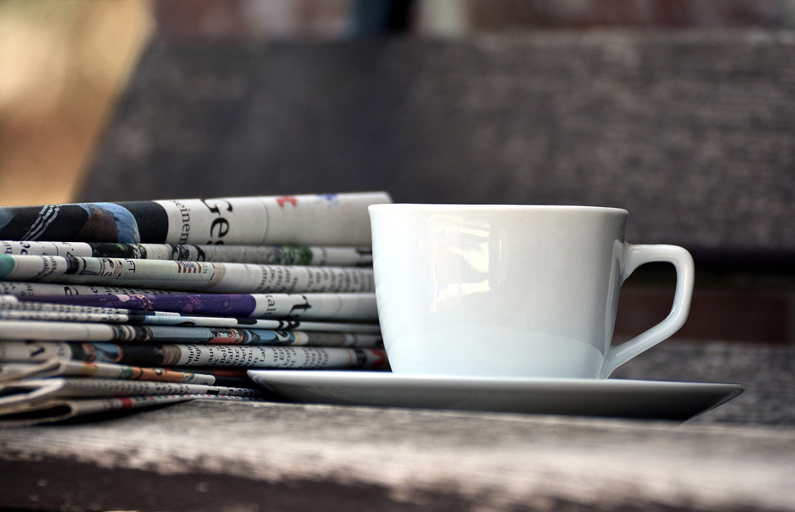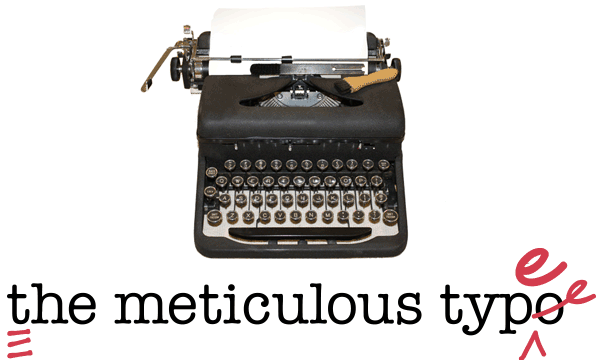 As a lifelong bookworm, I love nothing more than immersing myself in reading truly fine writing. When I became an editor, it seemed the perfect fit. What better job for a devoted bibliophile than reading other people’s writing and collaborating with them to create their best written work?
As a lifelong bookworm, I love nothing more than immersing myself in reading truly fine writing. When I became an editor, it seemed the perfect fit. What better job for a devoted bibliophile than reading other people’s writing and collaborating with them to create their best written work?
Recently, I have found that one of my favorite things to read are the excellently crafted articles that appear in The New York Times. Nothing says leisurely weekend than reading the paper version of the NYT cover to cover in bed while drinking my morning cup of coffee. For many years, I had thoroughly enjoyed this luxury, but when I moved back to Seattle in 2006, for some reason I didn’t renew my newspaper subscription. Twelve years later, I still had not found time to subscribe to and read the newspaper.
The film The Post reminded me of what I was missing
Not only was the storyline of The Post compelling, I was fascinated by the exacting process of how newspapers were created. Watching this movie reaffirmed my belief in the benefit to me and our democracy of having serious professional journalists tackling important stories, even when it might be unprofitable and even potentially illegal to do so, and producing enlightening, well-written pieces of journalism.
So, after seeing the movie, I decided to order the Sunday paper again. Because I spend so much time on a computer, I wanted the real deal—a paper copy delivered to my door. After a bit of research, I decided to order the NYT (The Washington Post does not deliver print editions in Seattle). The next Sunday, I awoke to the once-familiar sound of the paper landing on my doorstep. I eagerly jumped out of bed, got my coffee, and returned to bed to reacquaint myself with the joys of reading the newspaper.
But despite my best intentions, the newspapers started to pile up
After that first weekend, I noticed how long it took me to read this typically five pounds’ worth of paper. I felt remorse in questioning my plan so quickly. What had happened to my fervent desire to get back to reading thorough, skillfully written articles? What was really getting in my way?
And then it occurred to me: Facebook. Don’t get me wrong, I’m a fan of Facebook. But it is very easy to spend countless hours just trying to stay caught up given how often one’s Facebook news feed is updated.
So, one Sunday I set aside Facebook and started reading the paper from front to back. I was astonished (again) at the high caliber of writing in the NYT. The writing style went beyond the basic who, what, where, when, and why. Articles on subjects I’d never heard of—or gave much thought to—now caught my attention. The articles were well researched, the analysis clear and cogent. I started cutting out articles to share with friends and family. (Yes, I recognized that I had truly become my mother.) Several hours later, I realized that I used to spend the same amount of time in front of a screen reading Facebook news posts that were no more than sound bites, sparsely substantiated, and rehashed rants. Even reliable, trusted sources produced pieces riddled with typographical and grammatical errors, something that set this editor’s teeth on edge. I vowed to not let Facebook get in the way of staying informed in a meaningful way.
Reading the newspaper forces me to slow down and engage
The NYT is a large newspaper and the articles are long. It takes me a good hour to just get through the front section of the paper. To reap the full benefits of reading the paper requires a commitment of time and energy. There’s no breezing through the NYT. But oh, reading outstanding articles on a vast array of subjects is so worth the time spent. It not only expands my knowledge, but it widens my outlook by exposing me to different—often provocative—opinions. Even my vocabulary has improved.
In addition to being exposed to superlative writing, there is something special about reading the newspaper in paper form. A November 22, 2013, article published by Stanton Communications makes the argument that reading a newspaper in digital format is quite different than reading one in print. “When a newspaper is delivered in print, however, it is far more than content—it is an experience. It becomes richer and more innately important than all the information within.
“It gets your fingers dirty”
According to the authors of this article, “The newspaper compels you to turn each page, see what’s there and consider stories you might otherwise pass over because something compelling—a photo or headline—captured your attention.”
I couldn’t agree more. The physical act of holding pages of inky newsprint, listening to the rustling sound as you turn and fold the pages, and looking at the colorful, eye-catching photographs and intriguing headlines cannot be replicated by reading from a screen. I now reward myself by taking the time and expending the energy necessary to stay informed by turning off Facebook and immersing myself behind the pages of this award-winning newspaper.

Great post, and so true. You really miss something when you don’t read a print newspaper. Digital format is great to read or share just one story, but you never know what will catch your eye on the jump page. I do hope you don’t have to make that one cup of coffee last through the whole paper!
Thanks, Tina! Glad you share my appreciation for print newspapers. And no, more than one cup of coffee is required to get through The New York Times!
Hi Casey,
My husband and I started getting the Sunday New York Times a few months ago, after many years of going without (22 years since we moved to Seattle from the NY area). I still read the Seattle Times for local coverage. It takes me the better part of the week to get through most of the Sunday NY Times. It is a wonderful newspaper. I can’t imagine trying to read it online. Your description of reading a paper newspaper is spot on!
It takes me the week to finish up the NYT as well, Joanne. And the crossword and spelling bee puzzles are certainly not doable in a day! It is a wonderful paper indeed.
Hi Casey,
My favorite sections are the book review, Sunday review, and travel. As long as I get a couple of hours with those sections and a peek at the news, I am okay tossing out the rest.
Those are my favorites as well. I often toss out the sports section first…until I spot something beyond just scores and the like. Making sports interesting to me? Now that’s good writing!
The NY Times is fake news and failing. Don’t you listen to our president? That newspaper scares the shit out of him because it is devoted to truth. I love reading this paper, it truly does enrich my understanding of the world.